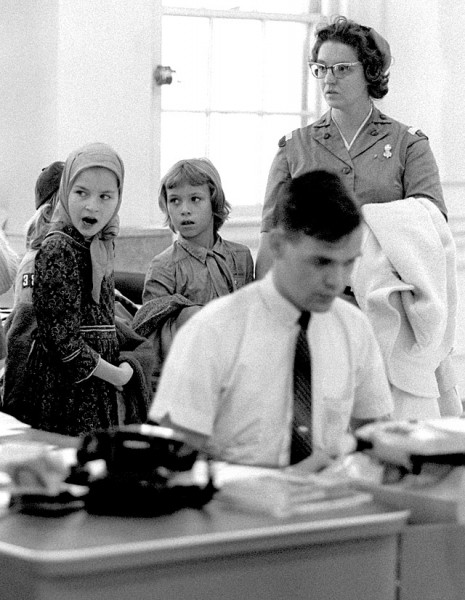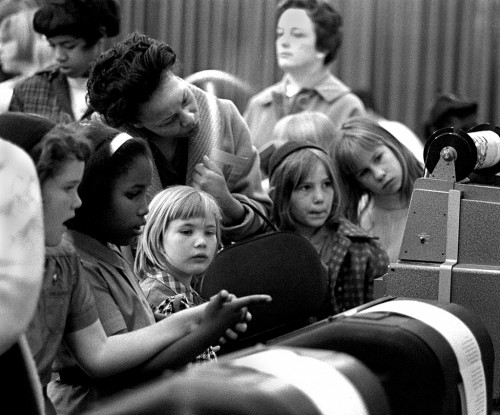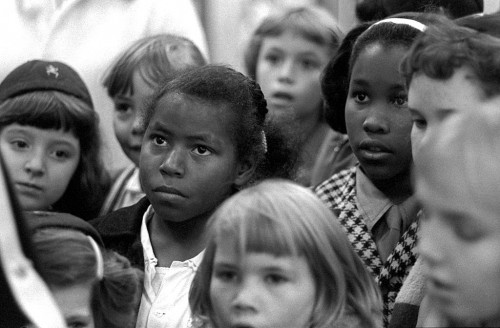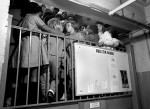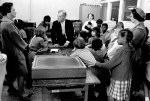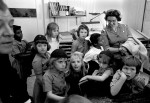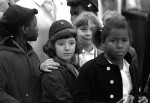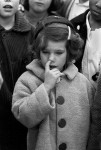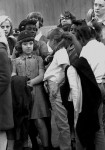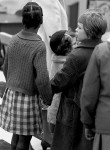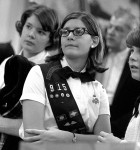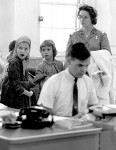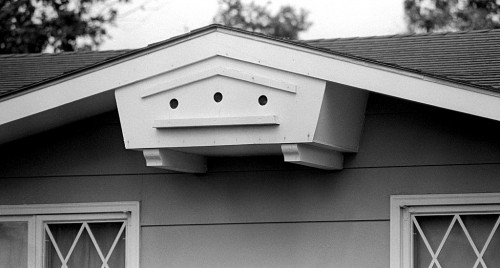 I posted photos of a group of Girl Scouts and Brownies touring The Missourian to celebrate the 100th birthday of the organization. I don’t think I’ll be around for the 200th birthday party, so I’d better get this one out early. Here’s the 1967 Girl Scout Day Camp held at The Seabaugh Farm. The following story ran on The Missourian’s Youth Page August 5, 1967. It had a three-photo combo of Scout Kim Williamson, above, daughter of Mr. and Mrs. Garnet Williamson, 1333 Howell, who “overcomes her shyness, gains enthusiasm and finally exuberantly sings out during a songfest at the Cadette and Junior Girl Scout Camp this week.” (The combo earned me a credit line and 15 bucks.)
I posted photos of a group of Girl Scouts and Brownies touring The Missourian to celebrate the 100th birthday of the organization. I don’t think I’ll be around for the 200th birthday party, so I’d better get this one out early. Here’s the 1967 Girl Scout Day Camp held at The Seabaugh Farm. The following story ran on The Missourian’s Youth Page August 5, 1967. It had a three-photo combo of Scout Kim Williamson, above, daughter of Mr. and Mrs. Garnet Williamson, 1333 Howell, who “overcomes her shyness, gains enthusiasm and finally exuberantly sings out during a songfest at the Cadette and Junior Girl Scout Camp this week.” (The combo earned me a credit line and 15 bucks.)
Telephone directory story
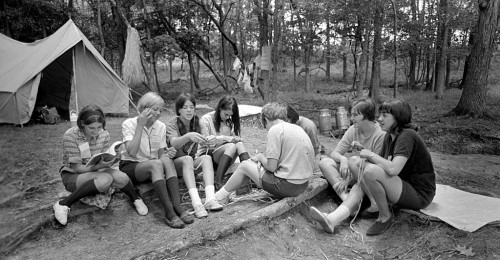 There are some stories that read like a telephone directory and this is one of them. That’s not necessarily a bad thing, an editor pointed out. “The phone book is probably the best-read book in town,” he said. “Everybody’s got one, and the first thing they do when a new one comes out is look up their name to see if it’s in there and if it’s spelled correctly. That’s one of the reasons we want lots of names in the paper. And, we want them spelled correctly.”
There are some stories that read like a telephone directory and this is one of them. That’s not necessarily a bad thing, an editor pointed out. “The phone book is probably the best-read book in town,” he said. “Everybody’s got one, and the first thing they do when a new one comes out is look up their name to see if it’s in there and if it’s spelled correctly. That’s one of the reasons we want lots of names in the paper. And, we want them spelled correctly.”
Camp Revolving Door
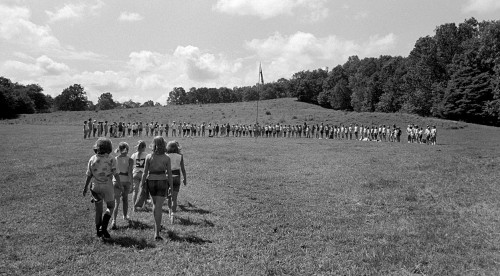 The Seabaugh Farm should be renamed Camp Revolving Door for two weeks out of the year because, only two hours after 113 Junior and Cadette Girl Scouts close their annual Day Camp, 225 Brownies and leaders will move in for another week of fun and learning.
The Seabaugh Farm should be renamed Camp Revolving Door for two weeks out of the year because, only two hours after 113 Junior and Cadette Girl Scouts close their annual Day Camp, 225 Brownies and leaders will move in for another week of fun and learning.
The girls will arrive at 9 a.m. and stay until 2:30 p.m. Until 12:30 they will be assigned to unit homes; after that they will work in activity centers. First-year Brownies will participate in singing, hiking, fishing and camp crafts; second-year Brownies will work on badges. After the first day, the meal will be prepared by the girls.
Mrs. Janet Dickerson was camp director
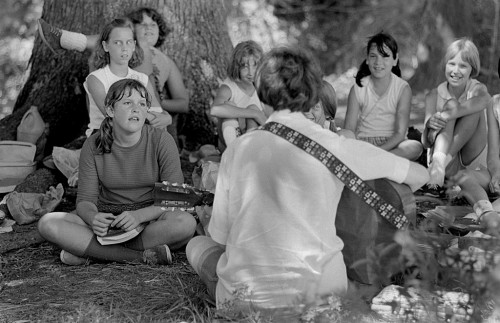 Mrs. Jack Dickerson, camp director, asks parents to follow road signs posted near the camp to prevent congestion. Mrs. Dan Day is assistant camp director, Mrs. Bruce Reed is business manager, and Mrs. Barry Hazen is scout adviser. Mrs. Paul Dowling will be in charge of the truck. The following persons will serve as nurses: Mrs. Milton Schoss, Mrs. Jim Tiapek, Mrs. L.S. Bunch, Mrs. George Farrar and Mrs. Marvin Roberts.
Mrs. Jack Dickerson, camp director, asks parents to follow road signs posted near the camp to prevent congestion. Mrs. Dan Day is assistant camp director, Mrs. Bruce Reed is business manager, and Mrs. Barry Hazen is scout adviser. Mrs. Paul Dowling will be in charge of the truck. The following persons will serve as nurses: Mrs. Milton Schoss, Mrs. Jim Tiapek, Mrs. L.S. Bunch, Mrs. George Farrar and Mrs. Marvin Roberts.
Units 1 through 4
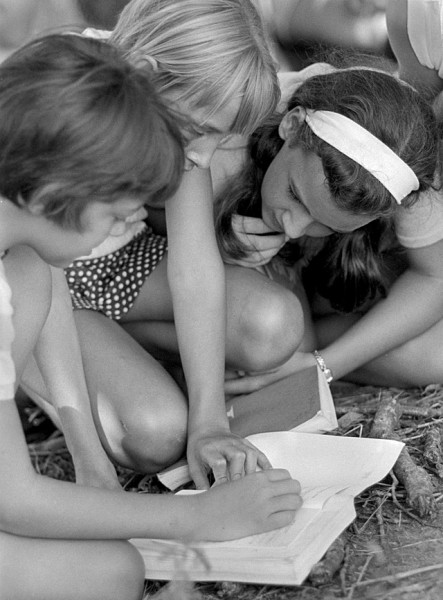 Leaders in the various units are as follows: No. 1, Mrs. A.D. Price, Mrs. Richard Dippold and Senior Scout Martha Hahs; No. 2, Mrs. Robert Guard, Mrs. Robert Restemyer and Senior Scout Ann Dippold; No. 3, Mrs. Ray Wilfong, Mrs. Orville Glueck, Mrs. Bob Drury and Senior Scout Regina Busche, and No. 4, Mrs. H.W. Benson, Mrs. Donald Terry and Senior Scout Betsy Evitts.
Leaders in the various units are as follows: No. 1, Mrs. A.D. Price, Mrs. Richard Dippold and Senior Scout Martha Hahs; No. 2, Mrs. Robert Guard, Mrs. Robert Restemyer and Senior Scout Ann Dippold; No. 3, Mrs. Ray Wilfong, Mrs. Orville Glueck, Mrs. Bob Drury and Senior Scout Regina Busche, and No. 4, Mrs. H.W. Benson, Mrs. Donald Terry and Senior Scout Betsy Evitts.
Units 5 through 7
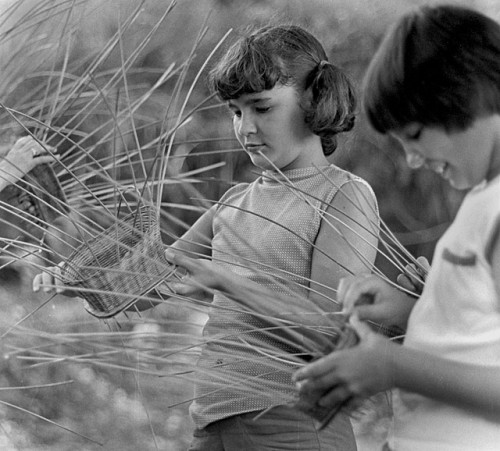 Other troops and leaders include #5, Mrs. Wilfred Ressel, Mrs. Jimmy Musgraves and Senior Scout Tara Kaiser; No. 6, Mrs. Albert Hitt, Mrs. David Retherford and Senior Scout Chris House; No. 7, Mrs. F.I. Drew, Mrs. Joe Krueger and Senior Scout Betsy Foster, and No. 8, Mrs. Jack Kollker, Mrs. Earl Miller and Senior Scout Jan Seabaugh.
Other troops and leaders include #5, Mrs. Wilfred Ressel, Mrs. Jimmy Musgraves and Senior Scout Tara Kaiser; No. 6, Mrs. Albert Hitt, Mrs. David Retherford and Senior Scout Chris House; No. 7, Mrs. F.I. Drew, Mrs. Joe Krueger and Senior Scout Betsy Foster, and No. 8, Mrs. Jack Kollker, Mrs. Earl Miller and Senior Scout Jan Seabaugh.
Older girls worked on badges
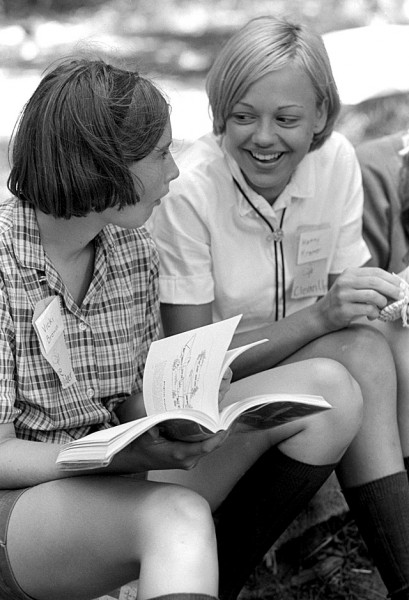 Badge and their directors are Indian Lore, Mrs. Ed Kaiser and the Misses Dippold and Busche; Dabbler, Mrs. Charles Doerge and Miss Evitts; Songster, Mrs. Donald Barklage and Senior Scout Barbara Stone; Water Fun, Mrs. Jack Rickard and Mrs. Charles Blattner; Rambler, Mrs. Dipplod and Miss Kaiser.
Badge and their directors are Indian Lore, Mrs. Ed Kaiser and the Misses Dippold and Busche; Dabbler, Mrs. Charles Doerge and Miss Evitts; Songster, Mrs. Donald Barklage and Senior Scout Barbara Stone; Water Fun, Mrs. Jack Rickard and Mrs. Charles Blattner; Rambler, Mrs. Dipplod and Miss Kaiser.
Crafts and other activities
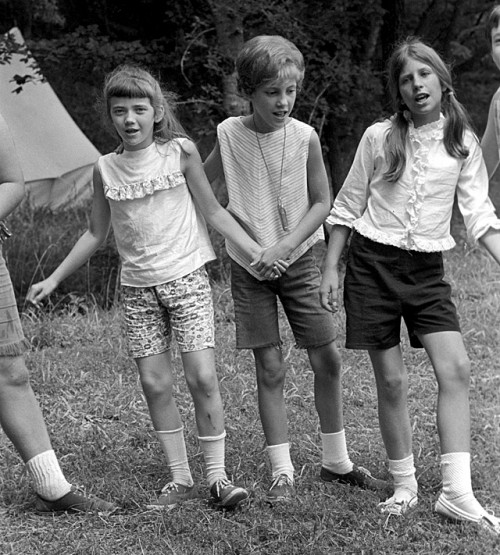 Activities and their directors include Hike and Barnyard Fun, Mrs. George T. Rasmussen, Mrs. Benson, Mrs. Musgraves and Senior Scout Jan Seabaugh; Arts and Crafts, Mrs. Wm. Dunham and Mrs. Emil Dewrock; Songs and Games, Mrs. Price, Senior Scouts Hahs and Becky Bender; Camp Craft, Mrs. Guard, Mrs. Wilfong, Miss House and Miss Foster; Fishing, Mrs. Tom Cooper, Mrs. Miller, Mrs. Richard Kogge and Mrs. Bill H. Williams. Senior Scouts who will have charge of the nursery wil be Jan Brunton, Donna Dinwiddle and Linda Drew.
Activities and their directors include Hike and Barnyard Fun, Mrs. George T. Rasmussen, Mrs. Benson, Mrs. Musgraves and Senior Scout Jan Seabaugh; Arts and Crafts, Mrs. Wm. Dunham and Mrs. Emil Dewrock; Songs and Games, Mrs. Price, Senior Scouts Hahs and Becky Bender; Camp Craft, Mrs. Guard, Mrs. Wilfong, Miss House and Miss Foster; Fishing, Mrs. Tom Cooper, Mrs. Miller, Mrs. Richard Kogge and Mrs. Bill H. Williams. Senior Scouts who will have charge of the nursery wil be Jan Brunton, Donna Dinwiddle and Linda Drew.
For the first time this year, Boy Scouts will be participating, entertaining the sons of mothers busy at the camp. They will be hiking, cooking, engaging in camp crafts and other activities.
Photo Gallery of Girl Scout Day Camp
Here’s a gallery that captured some of the excitement of the Day Camp. Click on any photo to make it larger, then click on the left or right side of the image to move through the gallery.
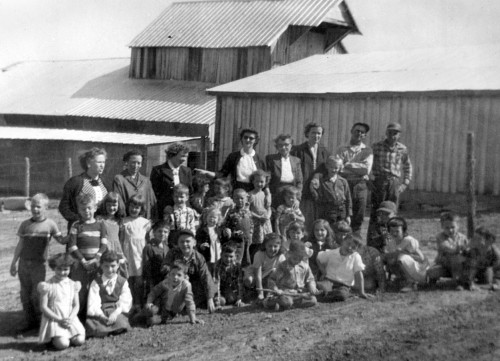 I was going to classify this photo in the mystery category, but after taking a closer look at it, I’m pretty sure it was my Trinity Lutheran School first grade class on a field trip to an unknown farm. Click the photo to make it larger.
I was going to classify this photo in the mystery category, but after taking a closer look at it, I’m pretty sure it was my Trinity Lutheran School first grade class on a field trip to an unknown farm. Click the photo to make it larger.

























